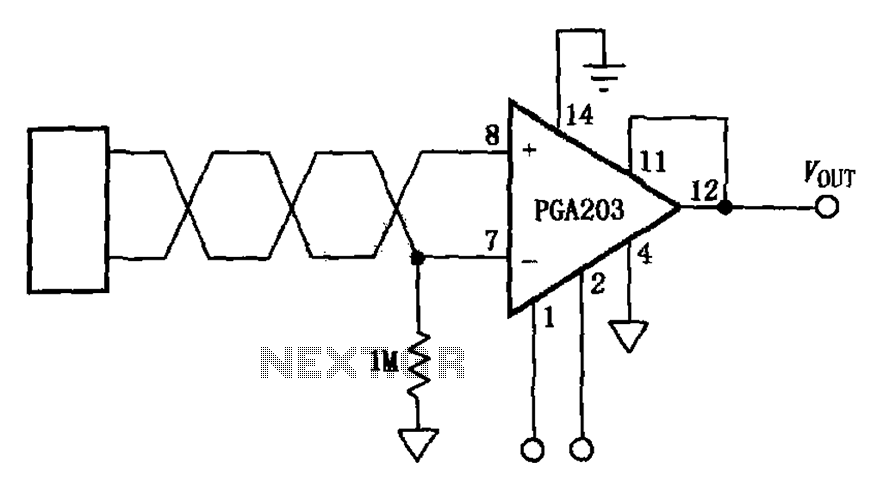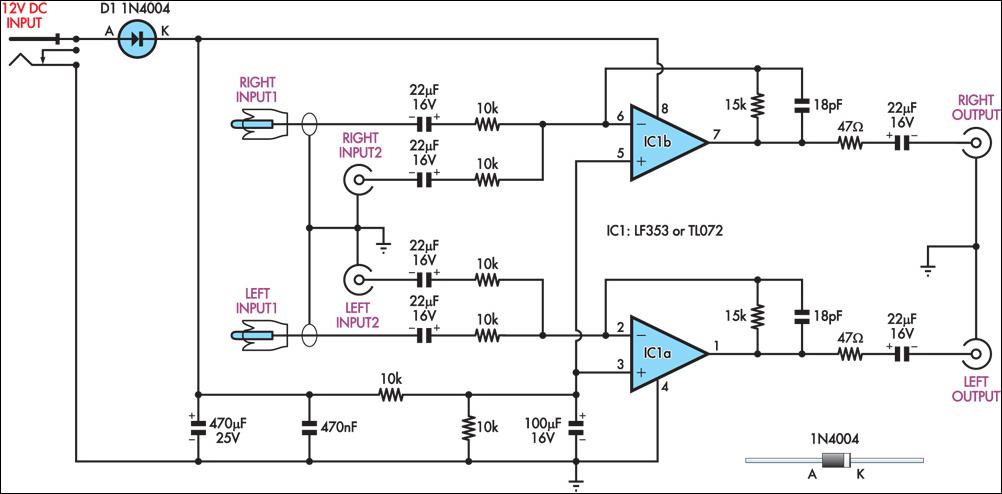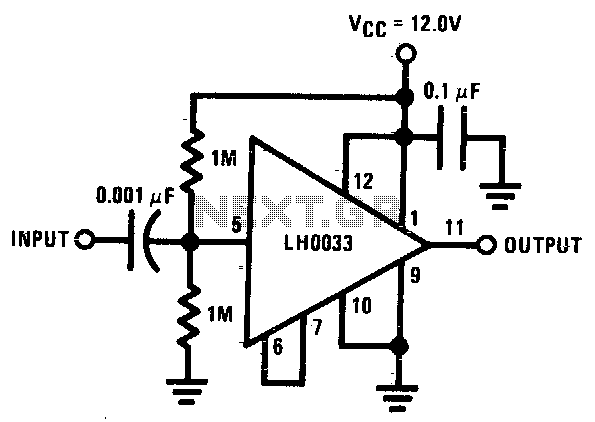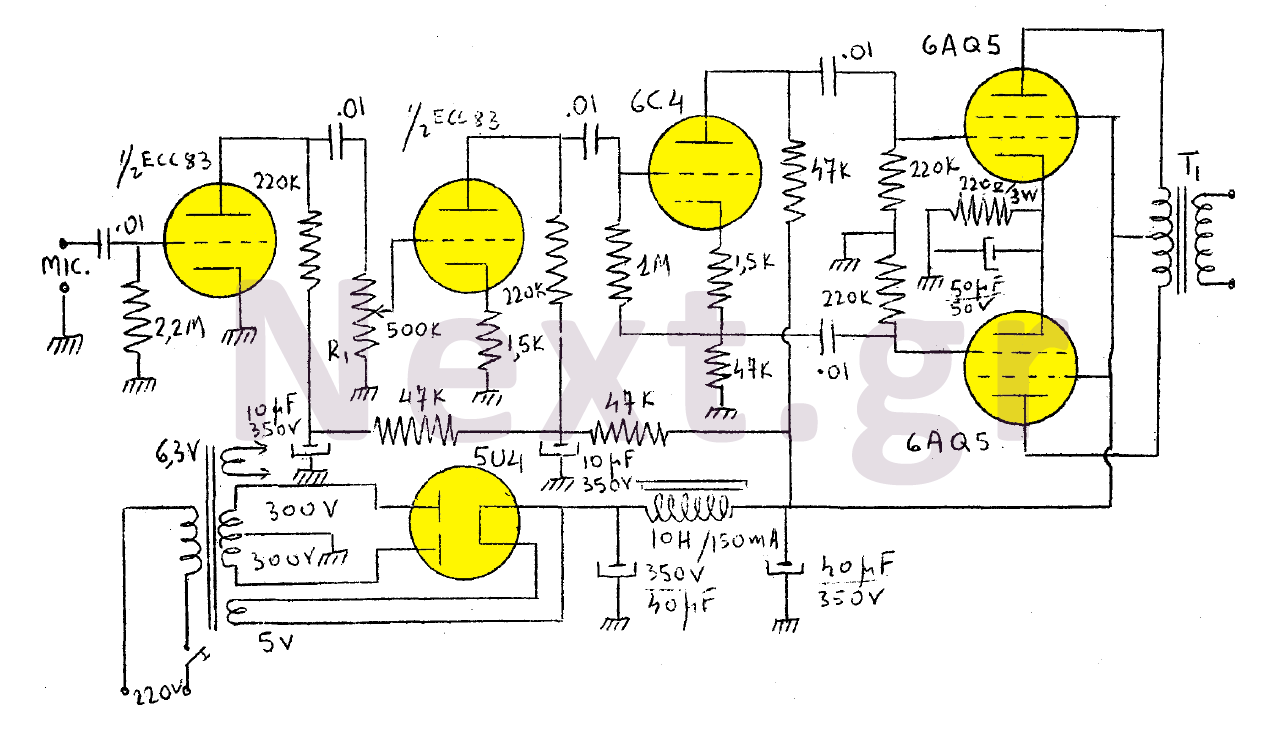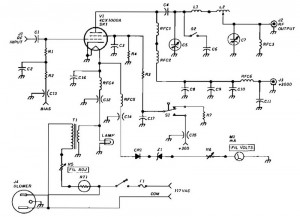
TDA1562Q 50W Car Audio Amplifier
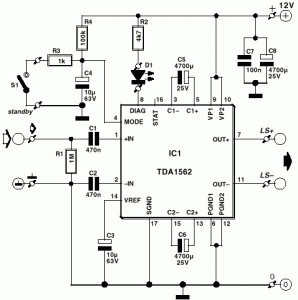
A car audio amplifier utilizing the TDA1562Q, capable of delivering 50W of audio power. The circuit diagram includes two resistors of 1 kOhm and two resistors of 4.7 kOhm.
The TDA1562Q is a high-performance integrated circuit designed for car audio applications, offering efficient amplification of audio signals. The amplifier operates in a bridge configuration, which allows it to deliver significant power output while maintaining sound quality. The circuit typically includes a power supply section, input stage, and output stage, along with necessary passive components such as resistors and capacitors to ensure stable operation and optimal performance.
In the described circuit, the two 1 kOhm resistors are likely used in the feedback loop to set the gain of the amplifier, while the two 4.7 kOhm resistors may be part of the input stage, providing impedance matching and ensuring that the input signal is appropriately conditioned for amplification. The amplifier's power supply should be capable of providing sufficient current to support the 50W output, typically requiring a voltage supply in the range of 12V to 14.4V, which is standard for automotive applications.
Additional components may include bypass capacitors to filter out noise from the power supply, as well as coupling capacitors to block DC offset from the input signal. The overall design must ensure thermal management, as the amplifier can generate heat during operation, necessitating proper heat sinking to maintain reliability and performance.
In summary, the TDA1562Q car audio amplifier circuit is a well-structured design that combines efficient power output with high fidelity audio reproduction, making it suitable for enhancing the audio experience in automotive environments. Proper implementation of the circuit components and adherence to design principles will ensure optimal performance and longevity of the amplifier.One car audio amplifier with TDA1562Q that can output 50W of audio power. TDA1562Q car amplifier circuit diagram 2 resistors 1 KOhms 2 resistors 4,7 KOhms.. 🔗 External reference
The TDA1562Q is a high-performance integrated circuit designed for car audio applications, offering efficient amplification of audio signals. The amplifier operates in a bridge configuration, which allows it to deliver significant power output while maintaining sound quality. The circuit typically includes a power supply section, input stage, and output stage, along with necessary passive components such as resistors and capacitors to ensure stable operation and optimal performance.
In the described circuit, the two 1 kOhm resistors are likely used in the feedback loop to set the gain of the amplifier, while the two 4.7 kOhm resistors may be part of the input stage, providing impedance matching and ensuring that the input signal is appropriately conditioned for amplification. The amplifier's power supply should be capable of providing sufficient current to support the 50W output, typically requiring a voltage supply in the range of 12V to 14.4V, which is standard for automotive applications.
Additional components may include bypass capacitors to filter out noise from the power supply, as well as coupling capacitors to block DC offset from the input signal. The overall design must ensure thermal management, as the amplifier can generate heat during operation, necessitating proper heat sinking to maintain reliability and performance.
In summary, the TDA1562Q car audio amplifier circuit is a well-structured design that combines efficient power output with high fidelity audio reproduction, making it suitable for enhancing the audio experience in automotive environments. Proper implementation of the circuit components and adherence to design principles will ensure optimal performance and longevity of the amplifier.One car audio amplifier with TDA1562Q that can output 50W of audio power. TDA1562Q car amplifier circuit diagram 2 resistors 1 KOhms 2 resistors 4,7 KOhms.. 🔗 External reference
